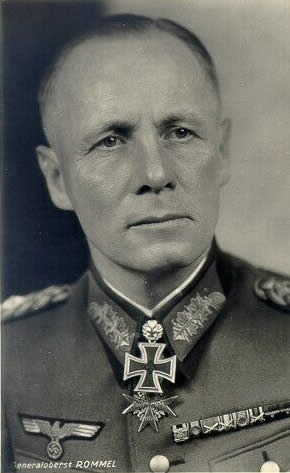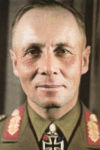Knocked Out? Tanks Today Have Nine Lives!
The War Illustrated, Volume 6, No. 152, Page 692, April 16, 1943.
Already in an earlier page we have described and pictured the work of the Royal Electrical and Mechanical Engineers, but here follows from the pen of ALEXANDER DILKE a fuller account, incorporating what has been revealed of the Corps' work in the Battle of Egypt and the subsequent pursuit of Rommel across North-Africa.
If you have 400 tanks and 200 are knocked out, how many have you left? It seems a simple sum in arithmetic. But the answer may well be 300 instead of the 200 which arithmetic suggests. The key to the mystery is "Reemee", slang name for Britain's youngest army corps, the Royal Electrical and Mechanical Engineers, whose principal task it is to see that tanks knocked out are back in battle again as soon as possible. They had their baptism of fire in the Battle of Alamein and the pursuit that followed. Just how well they came through it is shown by the recently-revealed news that during the first month of the battle they repaired and put back in the battle no fewer than twelve hundred British tanks.
It is the ability of the modern tank to come back after being knocked out that explains why the figures for tanks put out of action given by both sides so often do not "add up". To avoid confusion, for instance, it should be explained that of the 1,200 tanks repaired and sent back into battle, many tanks appear more than once. They were repaired again and again after after suffering damage from shells, mines, or simply breaking down through wear and tear.
In the earlier desert battles the advantage in this business of salving and repairing tanks was with the enemy. He had built up a fine organization – based upon British methods in the First Great War. On occasions after his armour had taken heavy punishment Rommel was able to strike back with surprising force because of his repair service. The lesson was learned by the British, and improved upon. Today "Reemee" works with a tenacity, skill and courage greater than the Germans have been able to show. None of the German "blitzes" has shown tanks in first class condition after a fighting advance of over 1,000 miles.
A "child" of the Royal Army Ordnance Corps, "Reemee" is responsible for all the work of repair and recovery of armoured vehicles, guns, wireless equipment, etc., in the field. It still depends upon the parent Corps for its supplies of spares, and this is no small business. There are 200,000 different items necessary for keeping in action and workable condition guns, wireless sets and engineering equipment. "Reemee" not only puts new caterpillars and engines into tanks on the field, but also repairs the most delicate optical equipment.
The work of repairing is echeloned backwards from front line to base, and is as carefully planned and organized as a modern factory. Working in the front line are men with mobile workshops on lorries whose task it is to do the minor repairs. A tanks is a very robust vehicle, but it contains many delicate mechanisms and may be put out of action be a small defect which can be repaired by experts in an hour or two – if they are there to do it.
Any tank requiring larger repairs goes back to the brigade workshops, further behind the lines. Workshop is, perhaps, a misleading word. In the desert it generally consisted of well-dispersed lorries and folding canvas shelters. The brigade workshops are mobile also to the extent that they move forward in leaps as the army advances. Giant transporter vehicles carry back tanks unable to proceed under their own power. On many occasions, the salvage and repair crews have shown great gallantry in pulling out tanks under the very nose of the enemy, often working in total darkness with nervous machine-guns sweeping the area.
Behind the brigade workshops are the divisional workshops. Here a tank can be fitted with a complete new engine, a new gun and, in fact, brought into battleworthy condition again after serious damage. Finally, there are base workshops, as solid and elaborately equipped as the factories that built the tanks. But comparatively few of the tanks go back beyond division workshops. Base workshops also do a big business in reconditioning batteries and tires. When every item has to be transported many thousands of miles through dangerous seas, the importance of salvage and reconditioning is vitally realized. Tanks so badly damaged as to be not worth repairing are stripped down for spare parts or, on occasions, two tanks are "synthetized" to produce a single new one.
Craftsmen and engineers of every kind are to be found in these workshops – welders, turners, blacksmiths, electricians, carpenters, radio engineers, armourers. And always they are working at top speed, for every hour that a tank or other vehicle is out of action means just so much less power to be brought against the enemy. In the heat of battle, tanks which can be rapidly got back into action get priority. Lulls give the men a chance to catch up on work on other vehicles.
If there is a probability of a tank being put back into action in a matter of hours, its crew stay with it. But if it has to go back to divisional workshops, its crew leave it and are given another. When the tank is repaired it goes into the general "pool" from which tanks are issued.
The worst enemy of these men who have to keep the tanks moving has been not the Germans but the sand. It gets into everything; and although special precautions are taken against it, nothing can prevent the sand from causing certain parts of the tank to wear out very much more quickly than they do in Britain. Provision for this had to be made in estimating the number of spare parts required and sent out.
"Reemee", having come with flying colours through its first great battle, is now preparing for an even bigger one – the invasion of Europe. Thousands of armoured vehicles and tanks will take part, and it will be "Reemee's" task to keep them fighting fit. Far in advance, its staff must plan where it will set up its base, divisional and other workshops, and what machinery and spares it will need. Standardization has, to a degree, simplified the task, not only be reducing the variety of spare parts required, but also by limiting the variety of breakdown causes. Different tank types, like different makes of motor-car, tend to develop different defects in action, and the repair experts quickly get into the habit of looking for them.
The men who keep the tanks moving have played a very important if unspectacular part in the great victory in North Africa. They would be the first to say that they have been able to send the tanks in to fight again and again only because of the workmanship put into them in British factories. To those thousands of men and women in Britain engaged in making tanks it must be immensely satisfactory to know that they are maintained by a body of men who are as courageous and skilled as those who fight with them in battle.
Index
Previous article
After 165 Years H.M.S. Victory Still Serves
Nelson's flagship in his last and greatest battle is now being used as a naval barracks. Fifty prospective Naval officers, studying for commissions and awaiting their Selection Board (they will become
Next article
I Was There! - We Formed Human Pyramids to Cross Wadi Zigzau
A young British major with a bullet embedded an inch above his heart continued to lead his men at the storming of Wadi Zigzau, in the first stage of the Mareth Line attack. Paul Bewsher, Daily Mail Sp





